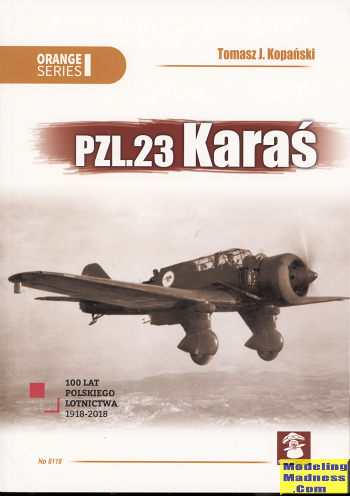 During the
1930s, Poland was able to pretty well keep up with the then current state of the
art when it came to war planes. However, this was not a time where designs
remained state of the art for very long. Often what was the latest and greatest
when the prototype flew, was not by the time it entered service. It is simply a
fact of the times and those aeronautic companies that were not thinking a step
or two ahead found their equipment near obsolete by the time the production run
was over.
During the
1930s, Poland was able to pretty well keep up with the then current state of the
art when it came to war planes. However, this was not a time where designs
remained state of the art for very long. Often what was the latest and greatest
when the prototype flew, was not by the time it entered service. It is simply a
fact of the times and those aeronautic companies that were not thinking a step
or two ahead found their equipment near obsolete by the time the production run
was over.
This is a fairly accurate assessment of the PZL.23 light
bomber. Poland needed a modern light bomber to replace the 20's era biplanes it
was then flying and so the PZL.23 was developed. As with many new airframes, it
had issues that needed to be taken care of before quantity production got
underway. The two most glaring were the too-high engine that prevented the pilot
from having decent vision during landing, and an internal vertical bomb bay that
resulted in poor bombing accuracy. Both were cured. One by lowering the engine
and raising the seat, the other by having all bomb loads external. Then there
were issues with the original engine in the PZL.23A that was cured in the
PZL.23B version.
The type was slow to enter service due to the need to
take care of various issues and a slow supply chain. By the time all aircraft
were in service, it was near the start of the war, and they were in the
obsolescent phase. They performed fairly well during their short time in combat,
but were hampered by a lack of fighter coverage and being tasked for low level
ground attack, a mission for which they were not designed. As a result, the
attrition rate due to combat and accidents was very high at 86%. To put this
into some context, the Ju-87 suffered similar high loss rates when operating
against a determined enemy such as they experienced in the Battle of Britain.
One can rely on excellent research and great photos in
MMP books and this one is no exception. The aircraft's development and eventual
service is fully covered. The plane was a minor export success with planes being
delivered to both Bulgaria and Romania. The Bulgarian planes in particular
differed in having Gnome-Rhone twin row radial engines installed. Both of these
nations had limited combat use of the plane.
In addition to the developmental history, we are
provided with a war-time history of each unit that flew the plane. A few units
had some success, but all eventually lost most of their aircraft. Such was the
loss rate that the Germans had few war prizes of these planes and unlike other
types, did not add them to the Luftwaffe inventory.
There are no extant examples, but the detail section of
the book is quite complete through the use of period photos and illustrations.
There is also a fairly large 3D art section that shows the various aspects of
the airframe. This is all rounded out by a nice color section that covers the
camouflage schemes and provides a fair number of large full color profiles of
the plane in service with Poland, Romania, and Bulgaria. Of course, you also get
1/72 plans of all the variations.
For fans of the type or the era, I can very much
recommend this one.
January 2019
Review book courtesy of
Casemate Publishing. You can get
yours
at this link.
If you would like your product reviewed fairly and quickly, please contact
the editor or see other details in the
Note to
Contributors.
 During the
1930s, Poland was able to pretty well keep up with the then current state of the
art when it came to war planes. However, this was not a time where designs
remained state of the art for very long. Often what was the latest and greatest
when the prototype flew, was not by the time it entered service. It is simply a
fact of the times and those aeronautic companies that were not thinking a step
or two ahead found their equipment near obsolete by the time the production run
was over.
During the
1930s, Poland was able to pretty well keep up with the then current state of the
art when it came to war planes. However, this was not a time where designs
remained state of the art for very long. Often what was the latest and greatest
when the prototype flew, was not by the time it entered service. It is simply a
fact of the times and those aeronautic companies that were not thinking a step
or two ahead found their equipment near obsolete by the time the production run
was over.